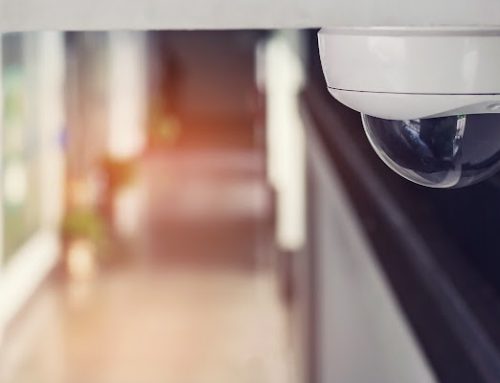In today’s digital age, technology is revolutionizing the way we approach crime prevention. One powerful tool that has emerged is video surveillance. This article explores the immense power of video surveillance in deterring criminal activities, taking crime prevention to a whole new level. With the advancements in video surveillance technology, such as remote monitored mobile surveillance units, authorities and businesses can now monitor key areas in real-time, capturing critical evidence that can assist law enforcement efforts.
By strategically deploying surveillance cameras in high-risk areas, a strong deterrent effect is created. Potential offenders know they are being watched. Video surveillance also serves as a valuable investigative tool, aiding in criminal identification and prosecution. The footage captured can provide essential evidence for solving crimes and bringing criminals to justice.
The presence of surveillance cameras can enhance public safety by increasing the perception of security. People feel more secure knowing that their surroundings are being monitored. This sense of security can contribute to a safer environment and deter potential criminal activity.
As technology continues to evolve, video surveillance is becoming an integral part of crime prevention strategies. Its ability to deter crime, aid investigations, and promote a safer society makes it a valuable asset in the fight against criminal activities.
The Effectiveness of Video Surveillance in Deterring Criminal Activities
Video surveillance is the use of cameras to monitor people and activities in a public or private space. It is a common crime prevention measure that is used in businesses, schools, and other public places.
The presence of security cameras was associated with a 50% reduction in crime – especially for theft and vandalism.
There is evidence that video surveillance can be effective in deterring criminal activities. A study by the University of North Carolina found that the presence of security cameras was associated with a 50% reduction in crime. However, the effectiveness of video surveillance can depend on a number of factors (such as access control, presence of guards, and gate systems), such as the type of crime being committed, the location of the cameras, and whether or not the cameras are monitored.
In general, video surveillance is more effective at deterring property crimes, such as theft and vandalism, than violent crimes, such as assault and robbery. This is because property crimes are often planned in advance, and criminals are more likely to be deterred if they know they are being watched.
Video surveillance can also be effective in solving crimes that do occur. If a crime is captured on camera, the footage can be used to identify the suspect and bring them to justice.
Overall, video surveillance is a valuable crime prevention tool that can help to reduce crime and make our communities safer. However, it is important to note that video surveillance is not a silver bullet, and it should be used in conjunction with other crime prevention measures.
Case Studies Showcasing the Impact of Video Surveillance on Crime Rates
One of the topics that has attracted much attention from criminologists and policymakers is the impact of video surveillance on crime rates. Video surveillance, also known as closed-circuit television (CCTV), is a system that uses cameras to monitor public places and record the activities of people. The main rationale behind video surveillance is that it can deter potential offenders by increasing the perceived risk of being caught, and it can also help the police to identify and arrest suspects by providing evidence. However, the empirical evidence on the effectiveness of video surveillance is mixed and inconclusive.
Impact on Crime
- Modest Impact: According to a systematic review by Welsh and Farrington (2008), video surveillance has a modest but significant effect on reducing crime, especially in parking lots and public transportation settings.
- Little Impact: Welsh and Farrington showed in other public settings, such as city centers, video surveillance has little or no effect on crime due to limited presence of other crime deterrent systems such as access control and security gates.
- Significant Impact: A study in 2019 (Piza) found that video surveillance has a significant effect on reducing crime, but only for property crimes, not for violent crimes. This is great for businesses and homes who want to deter theft or trespassing.
- Highly Effective: Studies show that video surveillance was more effective when it was targeted at specific crime problems, such as car thefts or robberies, rather than general crime prevention.
Video and Crime Clearance
Some studies have focused on the impact of video surveillance on crime clearance rates, rather than crime prevention. Crime clearance rate is the proportion of reported crimes that are solved by the police, either by arresting or identifying a suspect. Video surveillance may help the police to clear crimes by providing visual evidence that can be used to identify or locate suspects, or to corroborate witness statements or alibis.
This can be helpful for neighborhoods and commercial properties who need to file claims with insurance companies.
Types of Video Surveillance Systems
There are many different types of video surveillance systems available, each with its own advantages and disadvantages. Some of the most common types include: analog video surveillance systems, digital systems, IP systems, and indoor or outdoor systems.
Here are the 3 main applications of video surveillance systems:
- Remote video monitoring: This is used to protect against theft, burglaries, and dishonest employees. The video footage can be monitored remotely by security guards or law enforcement officials.
- Facility protection: This is used to protect the perimeter of the property or the perimeter of buildings. The video footage can be used to detect unauthorized access or activity.
- Monitor operations: This is used to monitor day-to-day operations and as a tool to streamline operations. The video footage can be used to identify inefficiencies or potential problems.
Best Practices for Implementing Video Surveillance in Crime Prevention
Video surveillance is a widely used tool for crime prevention and detection. It can help deter potential offenders, provide evidence for investigations and prosecutions, and enhance public safety and security. However, implementing video surveillance requires careful planning and consideration of best practices to ensure its effectiveness and legality. Some of the best practices for video surveillance are:
- Conduct a risk assessment to identify the objectives, scope, and location of the video surveillance system.
- Choose the appropriate type and quality of cameras, recording devices, and storage systems that meet the needs and budget of the project.
- Ensure compliance with relevant laws and regulations regarding privacy, data protection, and human rights.
- Establish clear policies and procedures for the operation, maintenance, and access of the video surveillance system.
- Inform and consult with the public and stakeholders about the purpose, benefits, and limitations of the video surveillance system.
- Evaluate the impact and performance of the video surveillance system regularly and make adjustments as needed.
We highly recommend speaking to a team of qualified security experts. BSN Security is the top security company in Arizona and can help you devise a full security system for you application. Whether you’re a single-family home, a neighborhood, an apartment complex, a government facility, or a local Arizona business, we can help.
Contact us today to start your path to greater security.
References
- Welsh B.C., Farrington D.P., Effects of closed circuit television on crime: A systematic review (2008). https://doi.org/10.4073/csr.2008.17
- Piza E.L., Caplan J.M., Kennedy L.W., Gilchrist A.M., The effects of CCTV on crime: A global systematic review and meta-analysis (2019). https://doi.org/10.1177/0306624X19883382
- Ratcliffe J.H., Groff E.R., Does CCTV reduce crime? A review of recent meta-analyses (2019). https://doi.org/10.1080/07418825.2019.1663311
- Jung Y., Wheeler A.P., The effect of public surveillance cameras on crime clearance rates (2023). https://doi.org/10.1007/s11292-021-09477-8
- Ashby M.P.J., The value of CCTV surveillance cameras as an investigative tool: An empirical analysis (2017). https://doi.org/10.1177/1477370816665562







Leave A Comment